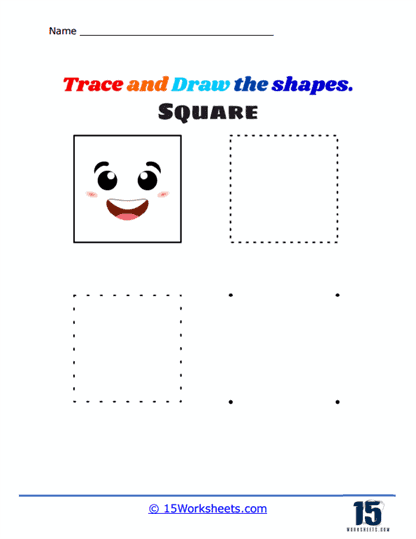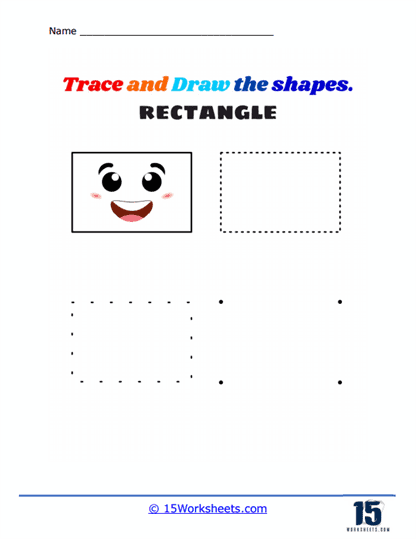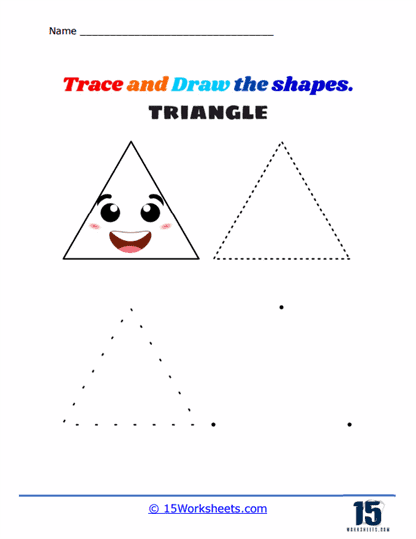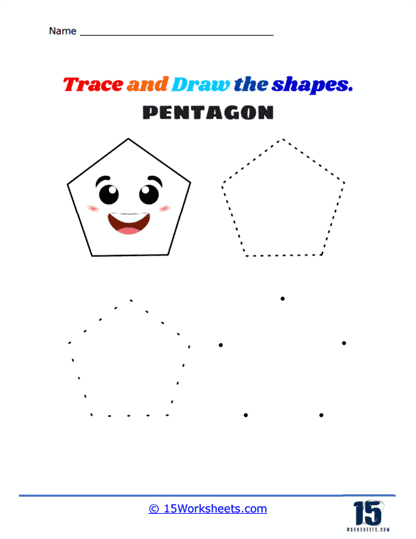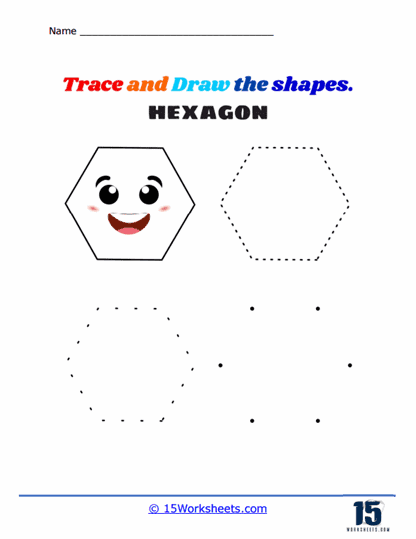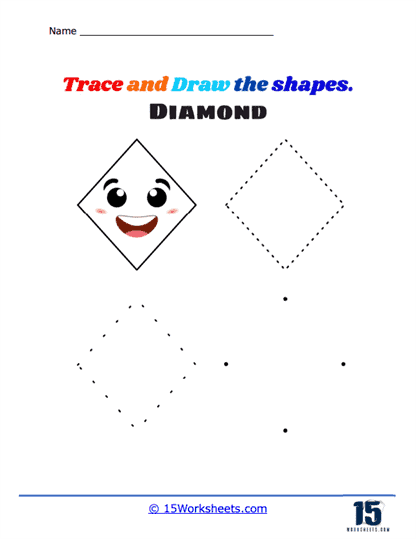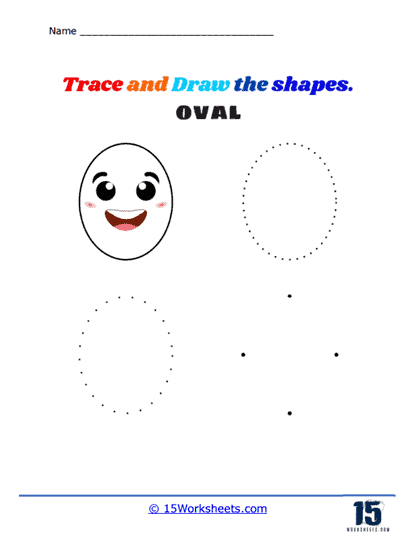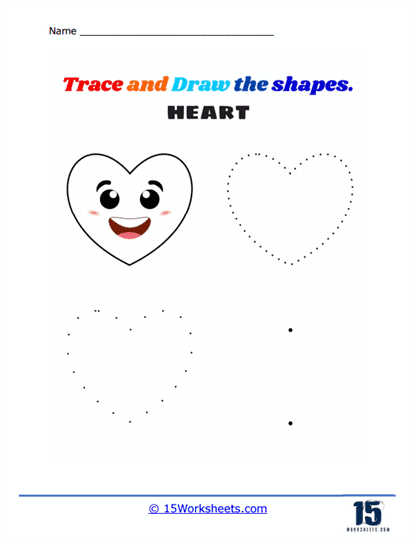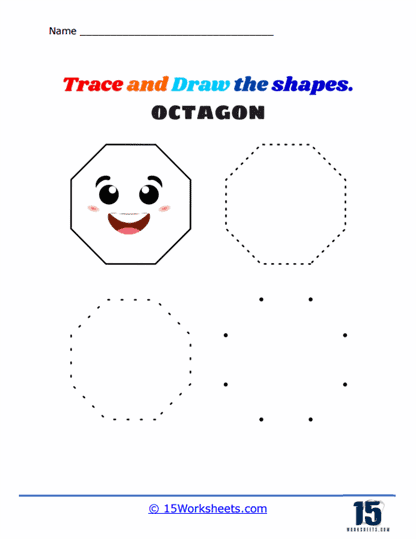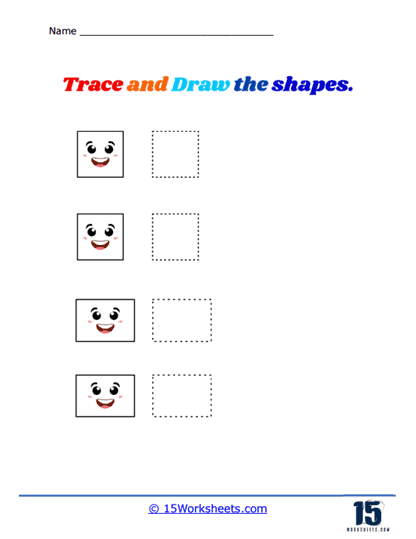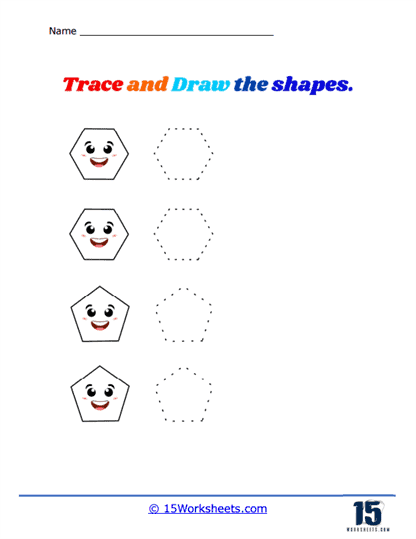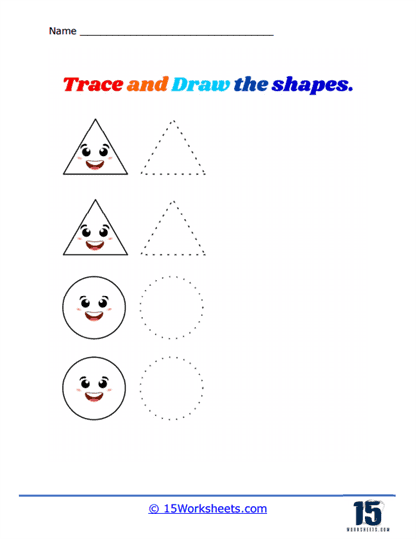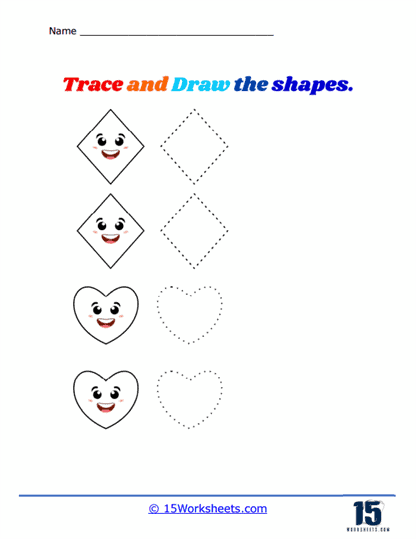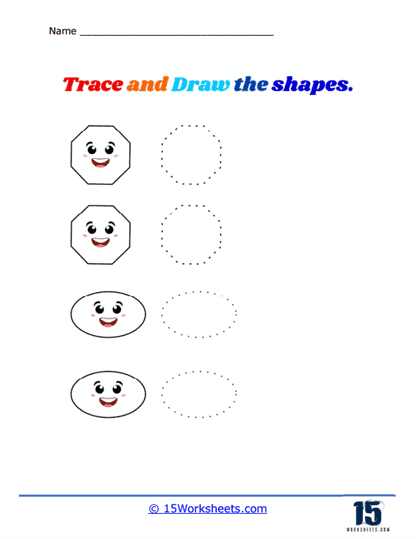Drawing Shapes Worksheets
About These 15 Worksheets
Drawing shapes worksheets are educational resources designed to help young children learn about, recognize, and practice drawing basic geometric shapes. These worksheets are typically used in early childhood education, such as preschool or kindergarten, and involve guided activities for drawing various shapes.
Drawing shapes worksheets often include activities such as:
Tracing – Worksheets may provide dotted or faint outlines of shapes for children to trace over, helping them develop their fine motor skills and become familiar with the shape’s form.
Drawing Within a Grid – Some worksheets may feature a grid or a series of lines that children can use as guides to draw shapes accurately. This activity helps improve spatial awareness and control while drawing.
Drawing Freehand – Children may be asked to draw shapes freehand, without any guides or templates, which helps them develop their drawing skills and confidence in recognizing and reproducing shapes.
Drawing Specific Properties – Worksheets might prompt children to draw shapes that have a certain number of sides or corners, reinforcing their understanding of shape properties and encouraging them to think critically about the shapes they are drawing.
Creating Pictures – Some activities may involve using multiple shapes to create a picture or scene, encouraging creativity and imagination while reinforcing shape recognition and manipulation skills.
Problem-solving Tasks – Worksheets may include puzzles or challenges where children need to complete missing parts of a shape or figure. These tasks help children develop their problem-solving skills and spatial reasoning abilities.
Drawing shapes worksheets provide an engaging and interactive way for young children to learn about shapes, develop their fine motor skills, and build a foundation for more advanced geometric concepts. These worksheets can be used by teachers and parents to supplement the learning process and make it more enjoyable and effective for the child.
Teaching Students To Draw Basic Shapes
Teaching students to draw basic geometric shapes is an essential foundation for geometry and spatial understanding. To achieve effective learning in this area, it’s crucial to follow a well-structured approach that combines visual aids, hands-on activities, and interactive methods.
To start, introduce students to the fundamental geometric shapes, such as circles, squares, rectangles, triangles, and diamonds. Ensure they have a clear grasp of the defining characteristics and properties of each shape. Visual aids, such as posters or multimedia presentations, can assist in making these concepts more tangible and accessible.
Engaging in hands-on activities is a powerful way to reinforce learning. Encourage students to draw, trace, or cut out geometric shapes from paper. These practical exercises provide opportunities for students to apply their knowledge and develop their skills.
Guided drawing exercises can help students gain confidence in drawing accurate shapes. Begin with straightforward shapes and progress to more complex ones, providing step-by-step instructions and demonstrations. Templates or stencils of geometric shapes can be provided for students to trace, giving them a sense of accomplishment as they create neat shapes.
Connecting geometric shapes to the real world can make the learning experience more relatable and engaging. Point out how these shapes are present in everyday objects, architecture, and nature, fostering a deeper appreciation for geometry’s practical applications.
Promote group activities where students collaborate to create geometric patterns or designs using the shapes they’ve learned. Collaboration not only reinforces understanding but also encourages teamwork and communication skills.
Incorporate games and puzzles that involve identifying and drawing geometric shapes. These interactive activities make learning enjoyable while challenging students to apply their knowledge creatively.
Regular assessment and feedback are essential components of effective teaching. Periodically assess students’ progress and provide constructive feedback, helping them identify areas for improvement and tracking their development over time.
To reinforce the mathematical concepts behind geometric shapes, connect drawing with topics such as symmetry, angles, and measurements. Demonstrating how geometry relates to math can deepen students’ understanding.
Encourage consistent practice, as drawing geometric shapes improves with repetition. Students should be motivated to continue practicing and refining their skills.
Additionally, consider incorporating creative projects that involve using geometric shapes in art and design. These projects allow students to apply their knowledge in a creative context, fostering a deeper appreciation for the aesthetic aspects of geometry.
Utilize educational technology tools like apps and software that offer interactive lessons on drawing geometric shapes. These tools can provide instant feedback and motivate students to engage with the material.
Above all, be patient and supportive of students who may find drawing challenging. Encourage them to persist and celebrate their progress, fostering a positive learning environment where all students can succeed in mastering basic geometric shapes.
Does Geometry Help With Drawing?
Yes, geometry can significantly help with drawing, and it plays a crucial role in many aspects of art. Here are a few ways in which geometry contributes to drawing:
Basic Outline – Almost every object you might want to draw can be broken down into basic geometric shapes like circles, squares, triangles, rectangles, etc. Being able to identify these shapes in complex objects can make the process of drawing them much easier.
Perspective – Geometry is also the foundation of perspective drawing. This technique uses geometric principles to create the illusion of depth and space on a two-dimensional surface. Understanding how lines converge at vanishing points helps artists depict a three-dimensional scene accurately.
Proportions and Scale – Geometry helps artists maintain correct proportions and scale. For example, human body proportions can often be estimated using geometric rules. Understanding geometry can also assist with enlarging or reducing a drawing while keeping its proportions intact.
Composition – Geometric principles can guide the composition of a piece of artwork. Artists often use the “rule of thirds” or the “golden ratio” to determine the most pleasing placement of objects within the frame.
Symmetry and Balance – Geometric concepts of symmetry and balance are often used in artwork to create a sense of harmony and order. Understanding these concepts can help an artist create a more compelling and visually balanced piece.
Patterns and Tessellations – Geometry helps in creating intricate patterns and tessellations in artwork, such as in the creation of mandalas or Islamic geometric patterns.

